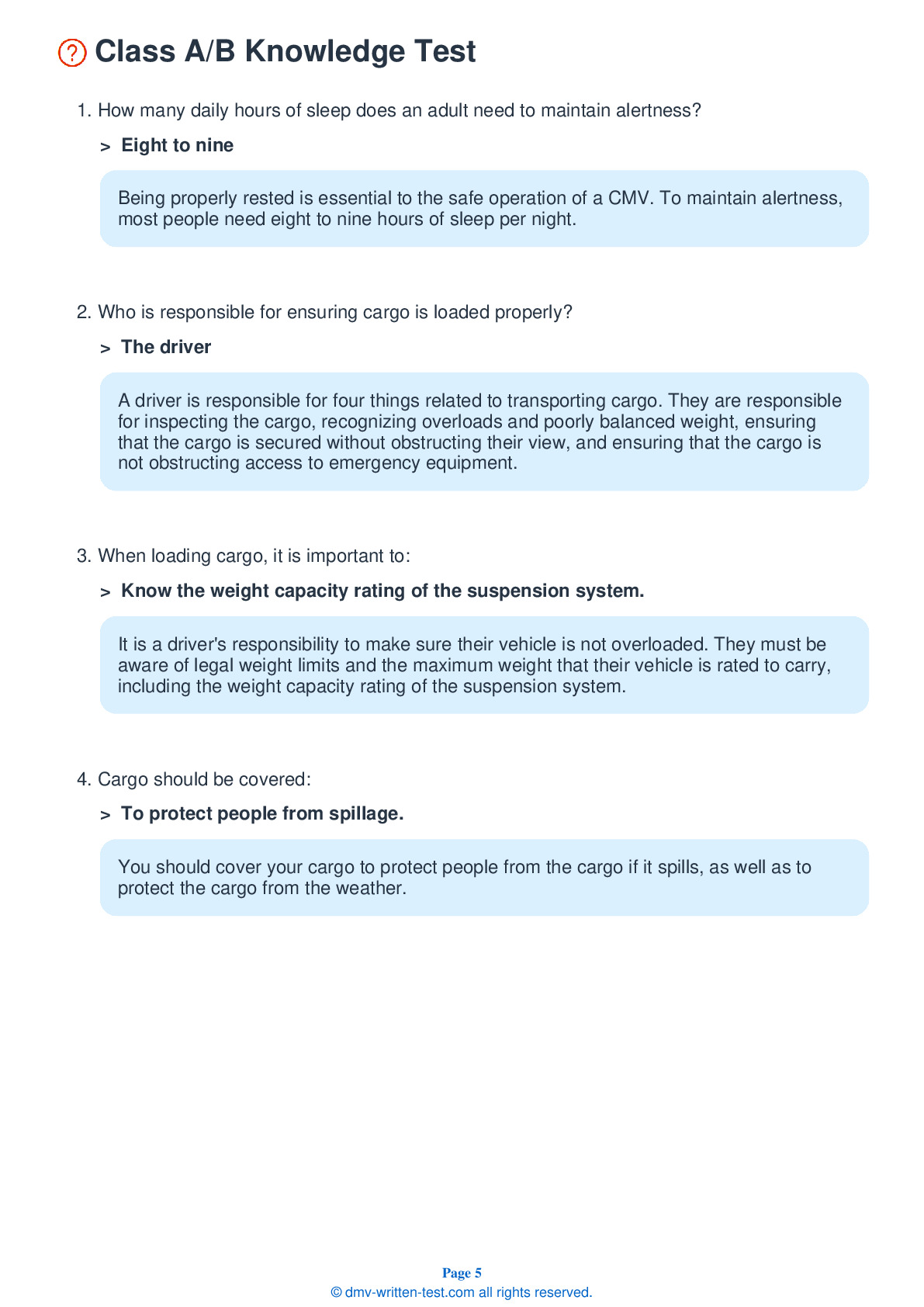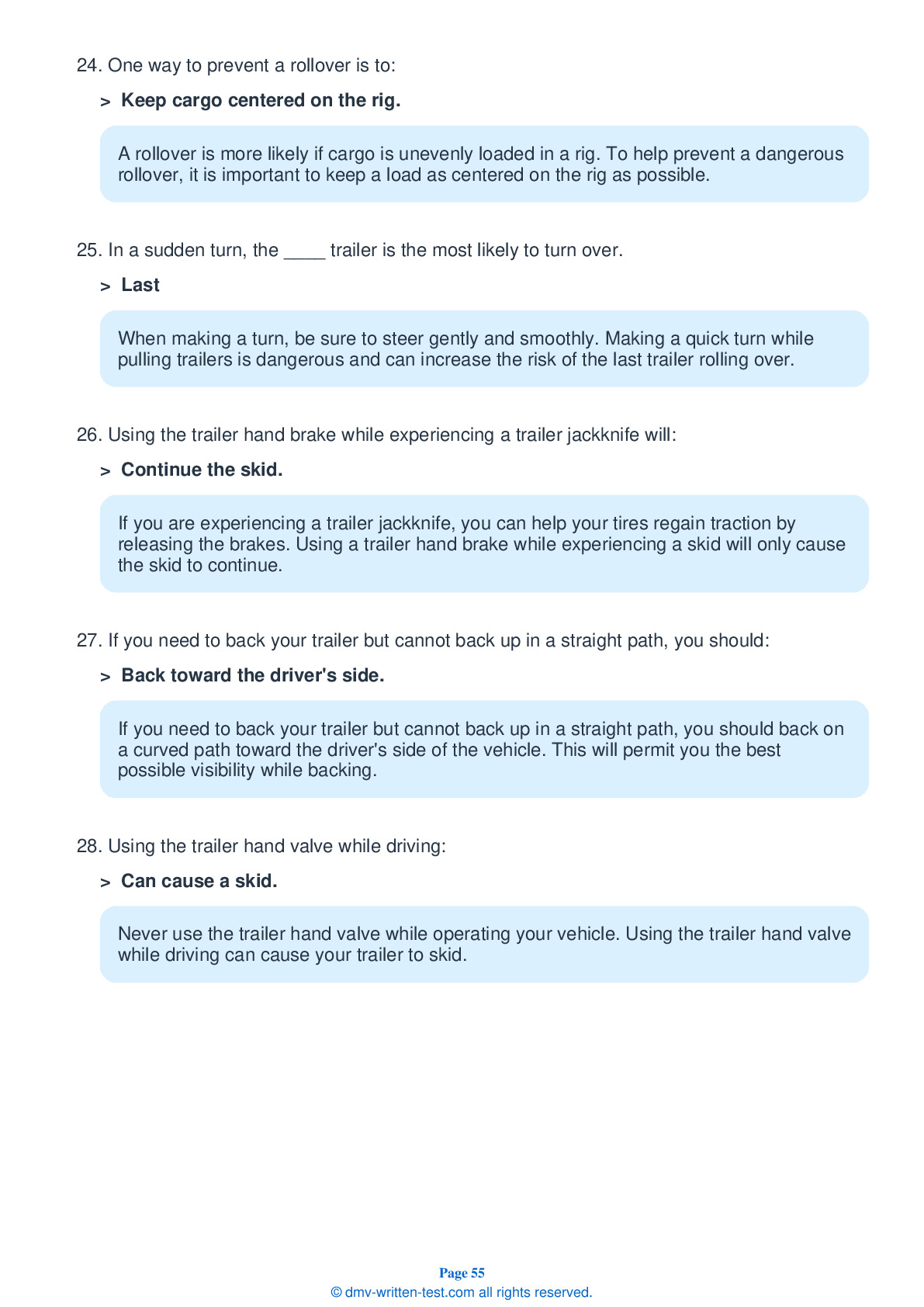Air Brakes
This endorsement is required for driving a vehicle with air brakes. To receive this endorsement, applicants must pass a written test. The test consists of 25 multiple choice questions. Each question has three or four answer choices. To pass, the applicant must answer at least 20 questions correctly. Test questions come from the Nevada Commercial Driver License Manual. Questions come from the chapter covering: Air Brakes. The Air Brakes endorsement may be used with the Class A, B or C CDL.
Number of Question
Passing Score
19. Air pressure should build up in a single air system within:
Explanation
In single air systems, air pressure should build from approximately 50 to 90 psi within three minutes.
20. If braking at a speed of 55 mph while driving on dry pavement, the brake lag can add ____ to your vehicle's total stopping distance.
Explanation
The total stopping distance for vehicles equipped with air brakes is made up of four factors: perception distance, reaction distance, brake lag distance, and braking distance. When braking at a speed of 55 mph while driving on dry pavement, the brake lag can add around 32 feet to a vehicle's total stopping distance.
21. The air storage tanks:
Explanation
The air storage tanks in an air brake system store compressed air to be used for braking. They hold enough air for the brakes to still be used several times if the compressor stops working.
22. The air storage tanks:
Explanation
In an air brake system, the air storage tanks hold enough air for brakes to be used several times if the compressor stops working.
23. Brakes may get out of adjustment:
Explanation
Brakes can get out of adjustment quickly, especially if they are used to the point of overheating. Brake adjustment should be checked frequently.
24. What does ABS do?
Explanation
The purpose of an Anti-Lock Braking System (ABS) is to prevent wheels from locking up during hard applications of the brakes, especially on slippery surfaces.
25. Most heavy-duty vehicles use:
Explanation




